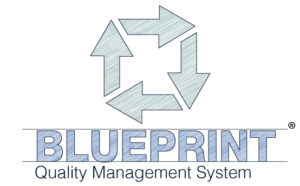A great representative at State Collection Service is compassionate and efficient, with the ability to solve all of a patient’s concerns during the first contact. It is important to measure the performance of our representatives to ensure that they are meeting our client and company expectations. At State Collection Service, we measure numerous Key Performance Indicators (KPIs) to track and evaluate the performance of our representatives. KPIs are measurable values that demonstrate how effectively representatives are achieving key business objectives and goals. Organizations like ours use KPIs to evaluate a representative’s success at reaching established targets.
KPI are vital instruments used by our managers and leaders to understand whether or not we are on a path to success. The right set of KPIs will shine light on performance and highlight areas that need attention. Without the right measurements, managers are flying blind, unsure if they are on the correct path. But while establishing the indicators is important, the key management issue is not what these numbers are, but rather what you do with them.
In a fast-paced environment where we manage thousands of calls each day while maintaining a high standard of customer service, we must be dialed into the latest metrics and KPIs. Below are some of the common KPIs we use to measure representative performance:
Schedule Adherence: Utilizing our management software with real-time monitoring can help resolve the old issues related to schedule adherence – this is an area that we continually monitor.
System vs. Paid Time (utilization rate): Measuring the amount of time each representative is working in the system versus their time card (paid time) – measured daily/weekly/monthly at the individual representative level.
Immediate Pays: Payments taken over the phone by check, credit card, and debit card with the money being available the same day.
First Call Resolution: Our goal is to resolve any customer issues and collect the balance on the first call.
Gross Collections / Fees: Monies generated by the individual representative – measured daily/weekly/monthly at the individual representative level.
Overall QA Score (through CallMiner, our Speech Analytics tool): Measured daily/weekly/monthly, we expect our representatives to achieve scores of 95% or greater within specific categories – Proper ID (right party identification based on specific parameters), Mini Miranda (for regulatory compliance and disclosure of call recording), Financial (asking for balance in full on every right party contact; using negotiation skills to secure best payment arrangement); and Compliance (HIPAA, TCPA, and other regulations as well as client requirements).
Some other KPIs that we monitor/measure at the individual representative level include number of calls, number of contacts (including right party contacts), number of accounts worked, talk time/update time, call duration, and promises of payment. These KPIs are also measured at daily, weekly, and monthly intervals.
The role KPIs play is very important. In fact, KPIs are one of the most important measuring sticks a business can have. Key Performance Indicators must reflect your organization’s goals and objectives – they are the key to success and must be quantifiable.
At State Collection Service, our goal is to provide our clients with the best possible service and strongest results. In order to do this, we are always reviewing our Key Performance Indicators, looking for improved ways to measure our performance and be the very best.
About State Collection Service, Inc.
Since 1949, State Collection Service has provided quality collection service to countless healthcare organizations.
Through experience and innovation, State Collection Service has grown to become a tremendously credible and nationally-recognized collection agency offering services from pre-registration to bad debt. It is upon the basis of ethical behavior and a dedication to integrity that each State Collection Service employee works to uphold the company’s vision – Partnerships for a Lifetime.
*This article first appeared in “A State Collection Service, Inc. Newsletter Volume 21, Issue 1, First Quarter 2015”















